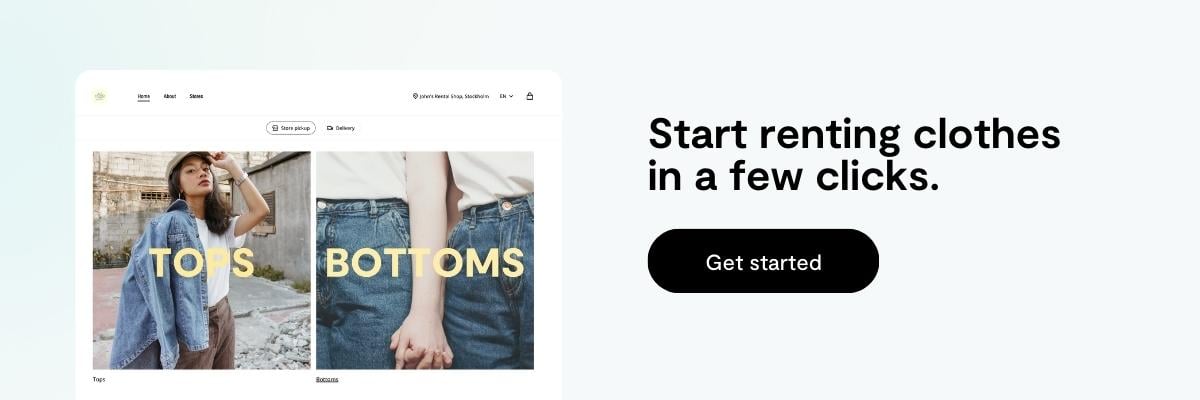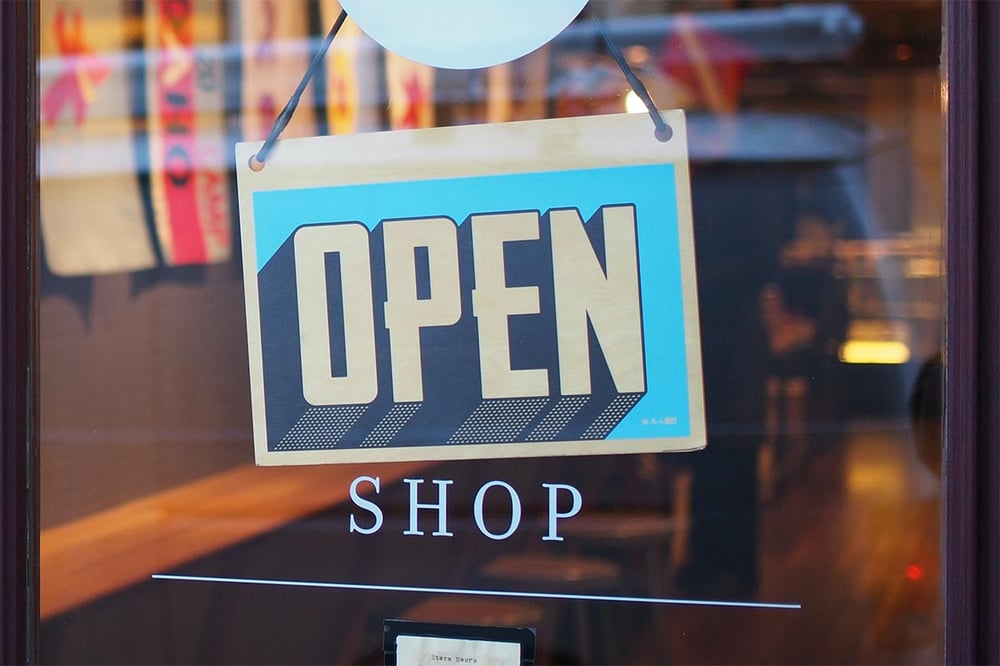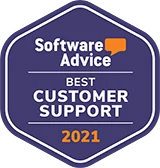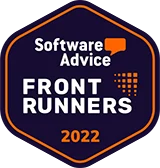The world of fashion is constantly changing and evolving, with new business models emerging, whether it’s in retail, reselling, and now, fashion renting.
What’s already highly popularised in the States is now also catching the wind in Europe and the rest of the world. So if you’re looking into starting a clothing rental business, you’re in the right place.
In this article, we’ll be going over the basics and essentials of what it takes to start, run, and grow your clothing rental business. Of course, we need some help from an industry expert, which is why we’re excited to have Kaisa Härmälä from The Ateljé sharing her experiences and best practices.
Together with her business partner Mari Kekäle, they founded The Ateljé in August 2020. The Ateljé is a fashion rental service based in Helsinki and carries major brands like Theory, Marimekko, and Helmut Lang.
Both Mari and Kaisa have backgrounds in fashion, design, and marketing, and after sitting on the idea of a rental business, they decided to make it a reality. Despite COVID and the clothing rental market still being rather untapped, The Ateljé has been a booming success.
The Ateljé isn’t just a new business model - it’s a way of living. Through renting clothes we want to be a part of the change towards a better, more sustainable world of fashion.
Starting with a business plan for your clothing rental business
There are as many business models as there are clothing rental services. You need to decide what kind of route you’re going to take when it comes to the products you will be offering, the kind of renting model you’ll be using, and your company values, since they help navigate with other business decisions as you will see further on in the guide.
Renting models
As we said, there are countless amount of business and renting models that you can choose from. We’ll be going over two of the most common ones, which are one-time renting and subscription-based renting.
One-time rentals
One-time renting is when a single piece of clothing gets rented for a short period of time, which could be from a few days up to a week. This is mostly seen in clothing rental stores that specialize in special occasions like weddings, proms, formal events, etc. The customer gets to pay a single fee and enjoy the garment without having to commit to owning a formal gown, for example.
What single-time rentals are good for is feeling out the local market. Renting clothes is mostly seen in the US, and Europe is slowly catching up. Renting out a piece of clothing offers a significantly lower threshold for people to get introduced to this rather new form of fashion consumption and test out how it works.
We started off with one-time rentals because we wanted to confirm that this is something that would work in Finland. It’s so much easier for people to try this concept out through single rentals because they don’t have to commit to any membership fees and they get to see how all of this works.
Subscription-based renting
Subscription-based renting, on the other hand, consists of a monthly subscription fee and the opportunity to choose three to four garments that can be rented out for the month. The subscription fees and the number of rentable clothing items vary depending on the brands the rental store carries.
With the subscription model, it’s easier to introduce a broader collection of clothes that can be used for more casual events or even to work and for drinks. It opens up new opportunities for different styles of clothing and helps reach a broader audience.
If we had known that people would react to our business in such a positive way, we would have gone with the subscription-based model from the get-go. But because of the uncertain market, and the situation with COVID, we still think starting off with one-time rentals was worth it.
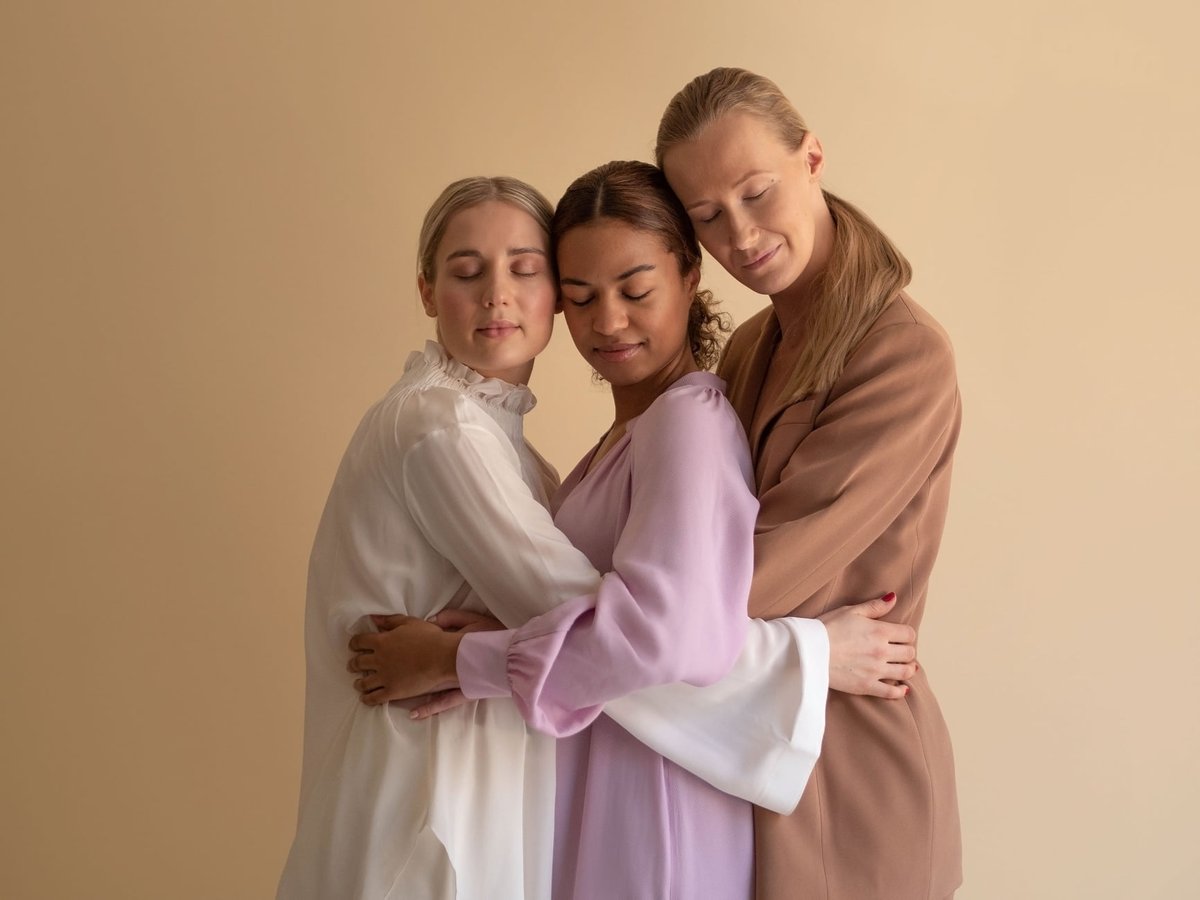
Budgeting
It seems obvious, but you need to get all of your budgeting on point. This means figuring out what you can afford when it comes to utility bills, a brick-and-mortar location maybe, insurance, and so on.
Additionally, this also means taking into account the inventory you would be acquiring for the store. In an industry like fashion and clothes, the shelf life is much shorter if compared to bikes, for example. When investing in clothes, you need to figure out how much you need to charge for the clothes to get your money’s worth.
→ Here's our guide on how to write the financial section of a business plan
.png?width=1000&name=clothingrental_website%20(1).png)
Online store
This also seems like an obvious thing, but it needs to be said. It is nearly impossible to survive and succeed nowadays without having any kind of online presence. Your website is one of the most visible touchpoints. If you don't already have a website, try Squarespace. Creating a beautiful rental website with Squarespace is really easy and requires no technical know-how.
With a well-built e-commerce website, you can operate and grow your business without even having a brick-and-mortar location.
Having an online store and presence on social media makes the biggest difference between having a one-time customer and a loyal, recurring customer. A well-designed website will support your brand, improve the overall shopping experience, and create a bond between you and your customers.
In addition to reaching a broader audience and offering various ways of buying from your business, a good e-commerce website will also provide you with useful data and insights on how your business is performing. Most website platforms offer metrics that you can follow that will help you make better business decisions and use your resources more effectively.
Check out our guide on how to create a rental website
Store
Running a clothing rental business does not require a physical location, of course, you’ll need space to store your inventory and where to do the packaging and maintenance, but not necessarily a store. This is great news because running a brick-and-mortar store requires a lot of time and resources.
The benefits of having a store, however, are also undeniable benefits. Being able to have customers visit your store and interact with you brings you valuable information and a connection that you wouldn’t otherwise get through an online store.
In addition to the human connection, it’s a solid way to decrease the struggles that come with running a solely e-commerce-based business: 30% of all products ordered online are returned as compared to 8.89% in brick-and-mortar stores. Having a store that your customers can visit, try out the clothes, and make sure everything fits perfectly will ensure a great customer experience that an online store solely cannot offer.
While having a physical store isn’t necessarily for a clothing rental business to be successful, we really wanted to have one so we could have the chance to chat with the customers, hear about their experiences and offer them the opportunity to visit us, have a cup of coffee and enjoy their experience.
Product descriptions
As we mentioned previously, having a brick-and-mortar location that your customers can visit ensures that they leave with a great experience and with clothes that fit just right.
When running any sort of online business, it is important to make sure that the information you provide compensates for the lack of physical contact with the product and store staff. Product descriptions help with expectation management and making sure your customers know what they’re getting. With fashion and clothing, the importance of well-written product descriptions is even higher.
All clothes move and feel differently on different people, so it’s important to find a way to communicate as accurately as possible the way the piece of clothing sits, how it looks, how the materials feel and move, and so on.
Some helpful things that should be included in product descriptions are things like high-quality photos, size charts, and material details.
Inventory
Purchasing the inventory is one of the most important areas of rental inventory management and processes for a fashion clothing business. For a clothing rental business to succeed, you need to be in touch with either your surrounding audience (eg. the trends that are most popular in your region) or know what the target audience is looking for.
The easiest way to get started is to buy in that you already know what works and is sought for, and most importantly: collect and analyze data. Stay on top of what’s most popular, what kind of styles your customers are looking for, what kind of brands they support, and in what sizes they usually range in.
Fortunately, most e-commerce websites and rental platforms offer analytics tools where you can find this information and analyze it, making the next round of inventory acquisition much easier.
How to decide on what to buy
There’s no one right recipe for what you should buy for your clothing rental business. This is why it’s important to do your market research and follow data since things like location, target audience's values, demographics, local fashion trends, and so on will have a huge effect on what will sell well.
However, when deciding on what kind of clothes to buy-in, Kaisa and Mari noticed that everything they knew before was inapplicable in the fashion rental world. For instance, the fashion retail world leans towards simpler clothing, offering more basic pieces that are diverse and easier to style with other pieces of clothing. Kaisa and Mari were surprised to find that the least rented pieces were the ones they initially thought would perform the best: beautifully tailored jackets or little black dresses.
Because renting allows the customers to try out something new and exciting without having to commit to paying the full price and owning the piece of clothing forever, they tend to get more adventurous and branch out to more extravagant styles.
We always get surprised by the best-sellers after each season. Even though we both have experience in the fashion industry, we still have so much to learn and unlearn. The most important thing is to stay open-minded, research the data, and talk to the customers and ask what they want
Risk management
Fashion and clothes have a very industry-specific set of risks that retailers and rental businesses face. The biggest one is the risk of a clothing piece getting ruined after one use. In Ateljé’s experience, it’s very rare, but still, it is essential to have clear and comprehensive clothing rental terms and conditions in place.
Some clothing rental businesses might use deposits or a ‘’you-break-you-buy’’ policy, but Ateljé believes in letting the customers wear and enjoy the garment as if it’s their own.
Whether it’s borrowed or owned, people are usually mindful of what they’re wearing, and rarely get buck wild. Of course, there are occasions when during a party someone might spill red wine on a light-colored dress, but nothing that we can’t fix.
Another risk is the clothing being untrendy. Despite all the data collection and estimations, it might be that a piece of clothing didn’t perform as well as expected, or it went out of style quicker than predicted. In this case, a good backup plan instead of letting the garment sit in the inventory unused is to try selling the item for a lower price. This way, you’re not losing all of your investments and making sure the piece of clothing finds a new home.
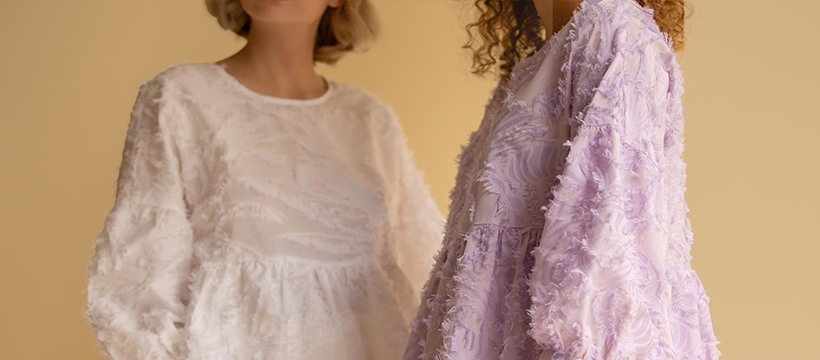
Clothing maintenance
For a clothing rental business, making sure the clothes’ maintenance and cleaning are on point is vital, especially if your offering includes high-end and luxury brands.
Just like with any other rental product, doing proper maintenance work extends the product's life cycle and, thus, ensures you’re getting your money’s worth of your investment. It also adds to the experience to know that all the customer needs to do is pick up and return the piece of clothing—no need to stress about dry cleaners or anything else.
Some clothing rental businesses make it the customers’ responsibility to take care of the cleaning. For us personally, we wanted to do everything ourselves. This way we ensure that when the clothes are rented again, they are scentless (whether that would be perfumes, cigarettes, or even a specific detergent) and in a brand new condition
Outsourced dry cleaning
When deciding on whether to collaborate with professional dry cleaners or do the cleaning yourself, there are a few things to consider. Both have their pros and cons; with a collaboration with a professional dry cleaner, there are more additional expenses, and you’d be losing control over your own products and having to trust their expertise in what they do. It also might be more time-consuming, as the cleaners will likely have other clientele. On the other hand, you wouldn’t have to worry about taking care of the clothing yourself.
In-house dry cleaning & maintenance
If you decide to do it yourself, consider whether you have or can afford the right equipment, a space to do it in, and the expertise to do it properly without damaging the materials. While it’s definitely more work to do it yourself, it also means that it’s easier to spot any damages done to the item, which you can fix up.
When we’re investing in new clothes, we usually evaluate the average use amount for any piece of clothing to be around 10 times before it needs to be either replaced or sold off - however, we’ve noticed that the actual average use amount is much higher thanks to the proper maintenancing work that we do
In either case, it is extremely important to make sure you have enough maintenance time in-between rentals and that the cleaning and maintenance process is close to flawless. You want the customers to enjoy the experience and receive a rented piece of clothing as if it’s new.
We want to make renting clothes seem appealing - even though the clothes are "borrowed" we want the customer to have the experience as if it’s a brand new piece of clothing that they just bought. Having the clothes smelling like someone else’s detergent would just make the customer feel weird about it and as if they’re wearing someone else’s clothes.
Marketing your clothing rental business
Marketing consists of many small parts which have to be constantly nurtured and taken care of. If you’re just getting started with marketing and the basic customer acquisition strategies, it might feel overwhelming. But don't worry. It's normal that you have to try different things out before finding out what works.
Depending on how broad or niche your target audience is, it takes a lot of trial and error to find the right tone and way to market to your audience. Because the clothing rental industry is still a relatively new concept, the old tricks that fashion retailers use might not apply to your business, partly because you want the customers to a) test a new concept out and b) keep coming back.
Just like with inventory acquisition, we had to unlearn all of the basics we knew about marketing and start off from a clean slate. Of course, there are similarities between the retail and rental world, but it’s a completely different challenge to get someone to try something new for the first time. You learn as you go.
→ Here are the 12 most common digital marketing strategies you should know.
Building a brand
The fashion industry is all about brand loyalty and emotional attachment. As we’ve said before, because the clothing rental industry is still rather new, establishing a solid brand identity and building a community around it becomes even more important. Unfortunately, since this is the type of marketing that isn’t directly trackable, it often gets put back on the priority list.
Depending on the brand you’re building, there has to be a balance between being refined and approachable. Of course, you want your brand to be polished, modern, and feel exquisite. But not to the point where your customers find it unapproachable and hard to interact with. You want people to feel excited about your brand and want to participate in the community.
Creating a community
This leads us to our next point: creating a community. The best way to stay connected with your audience, and get free publicity, is to be super active on social media and keep interacting with your customers. Once you start getting customers, you want to encourage them to post their outfit photos. After they do, comment, like, and share their special moments. In addition to creating a sense of community and customer loyalty, this helps you get other potential customers on board because they see other people’s experiences with your business.
By boosting and sharing the content your audience created, encourages others to hop on board and get excited to test your services. People are herd animals - if they see others doing something, they will want to try it out too.
Growing your clothing rental business
There are many, many ways of growing your business, but whatever it is you decide to do, it should be on-brand and based on your company values.
Whatever it is we decide to do in the future - it has to be according to our values. If we talk about sustainability and start shipping clothes around the world, that’s not really sustainable, or according to our values.
Opening new locations
Deciding on where to open a new location can be tricky. What you want to keep in mind when deciding on where to open your new store is your data and how central the new location will be to your customers. Deciding on a location where you already have demand and an audience will make it considerably easier to build a community in a new area.
It's important to do your homework and scout out things like competition, accessibility, storage, and room for possible maintenance work if you decide to do it yourself. In case you won't, make sure to research possible dry cleaners and postal services to make the delivery part of your business easier.
Expanding your offering
Growing your operations doesn’t only mean physically expanding store locations, for example, but also offering a variety of services. If you started off with one-time rentals, you can consider offering subscriptions and vice-versa. You can also expand by offering larger collections of clothes for more than one gender or for special occasions like weddings, for example.
Hope you found this guide and tips helpful! We wish you the best of luck with your already and to be existing businesses. Of course, a huge thanks to Kaisa and The Ateljé for sharing their tips and expertise.
Photo credit: The Ateljé


